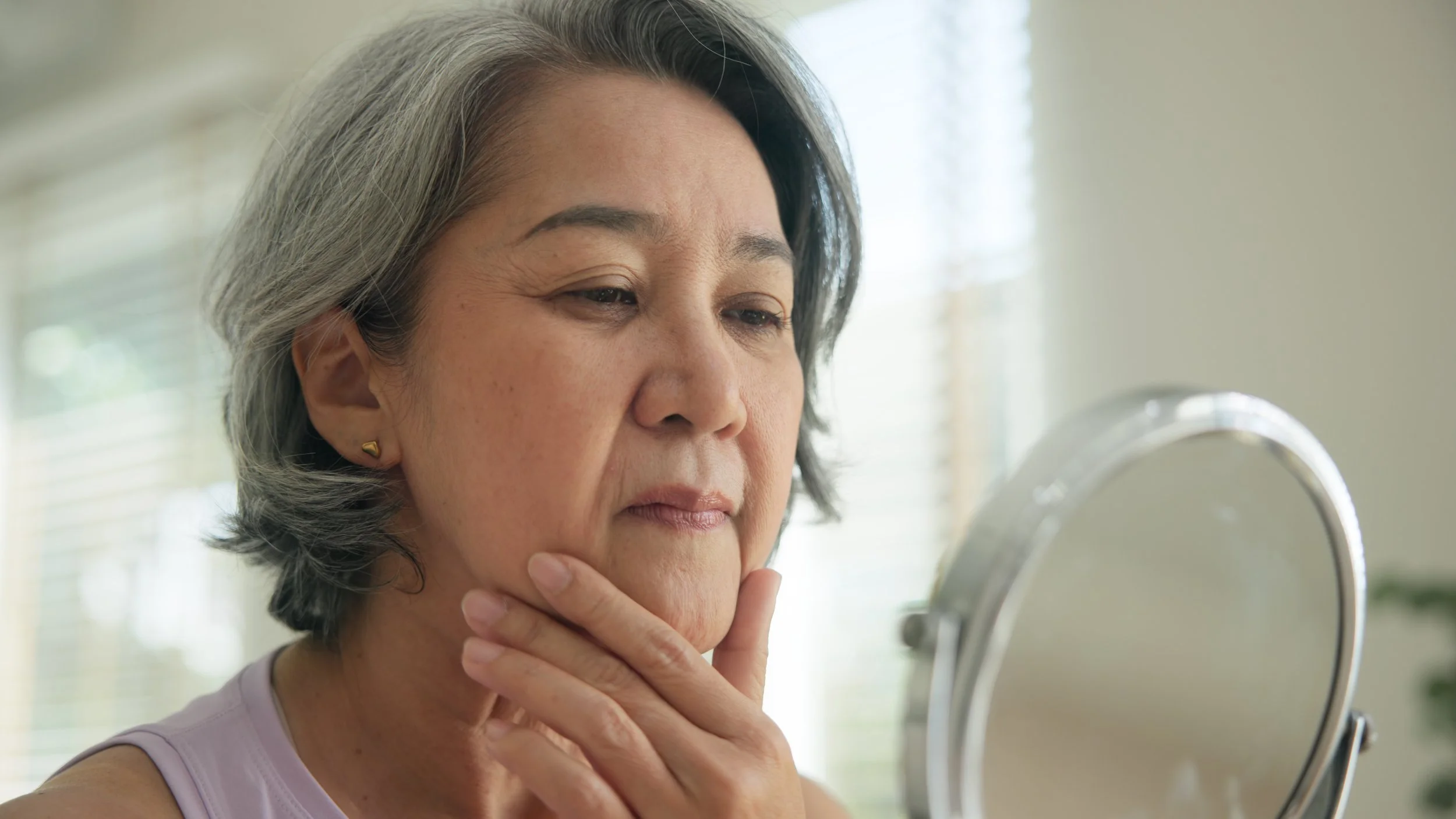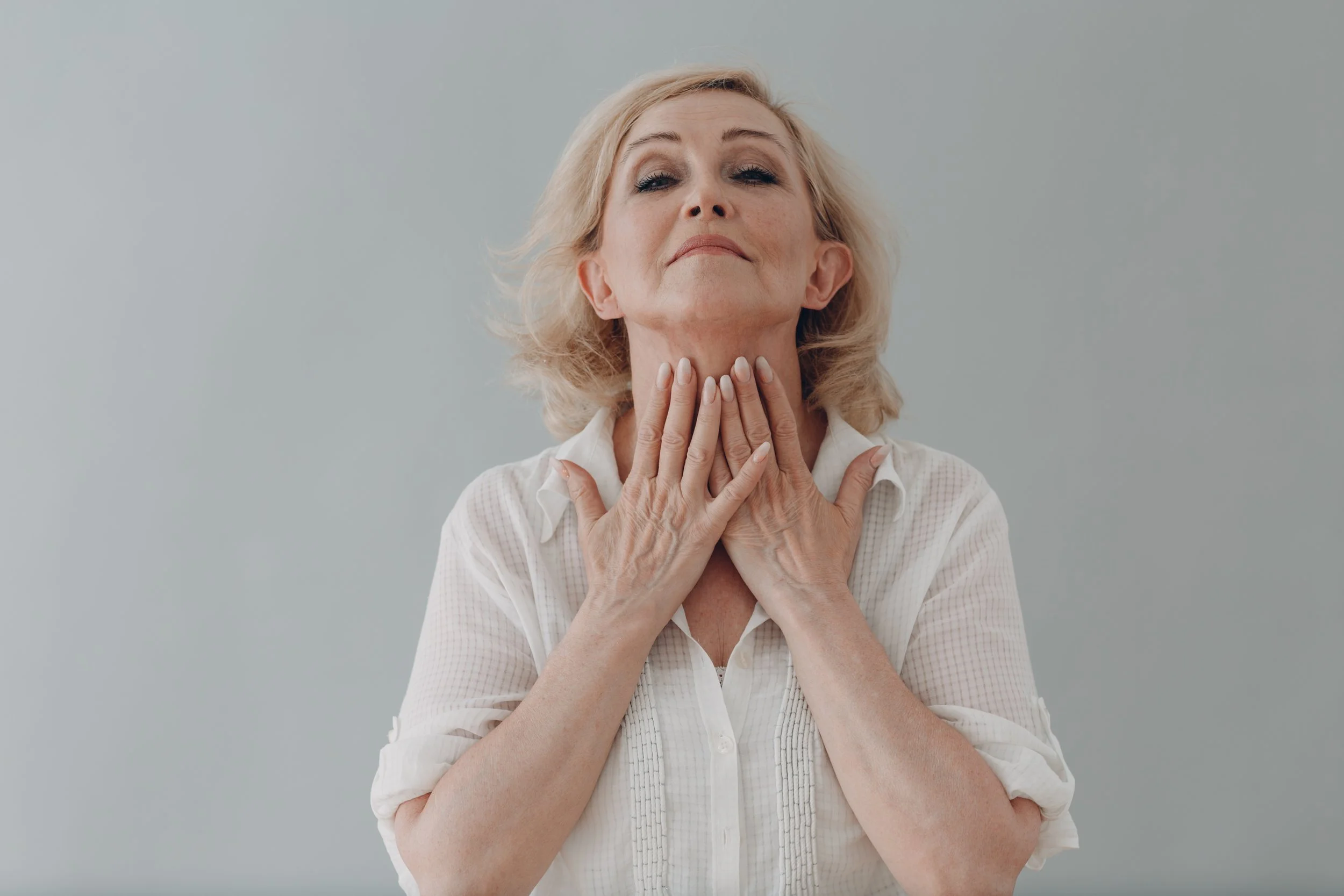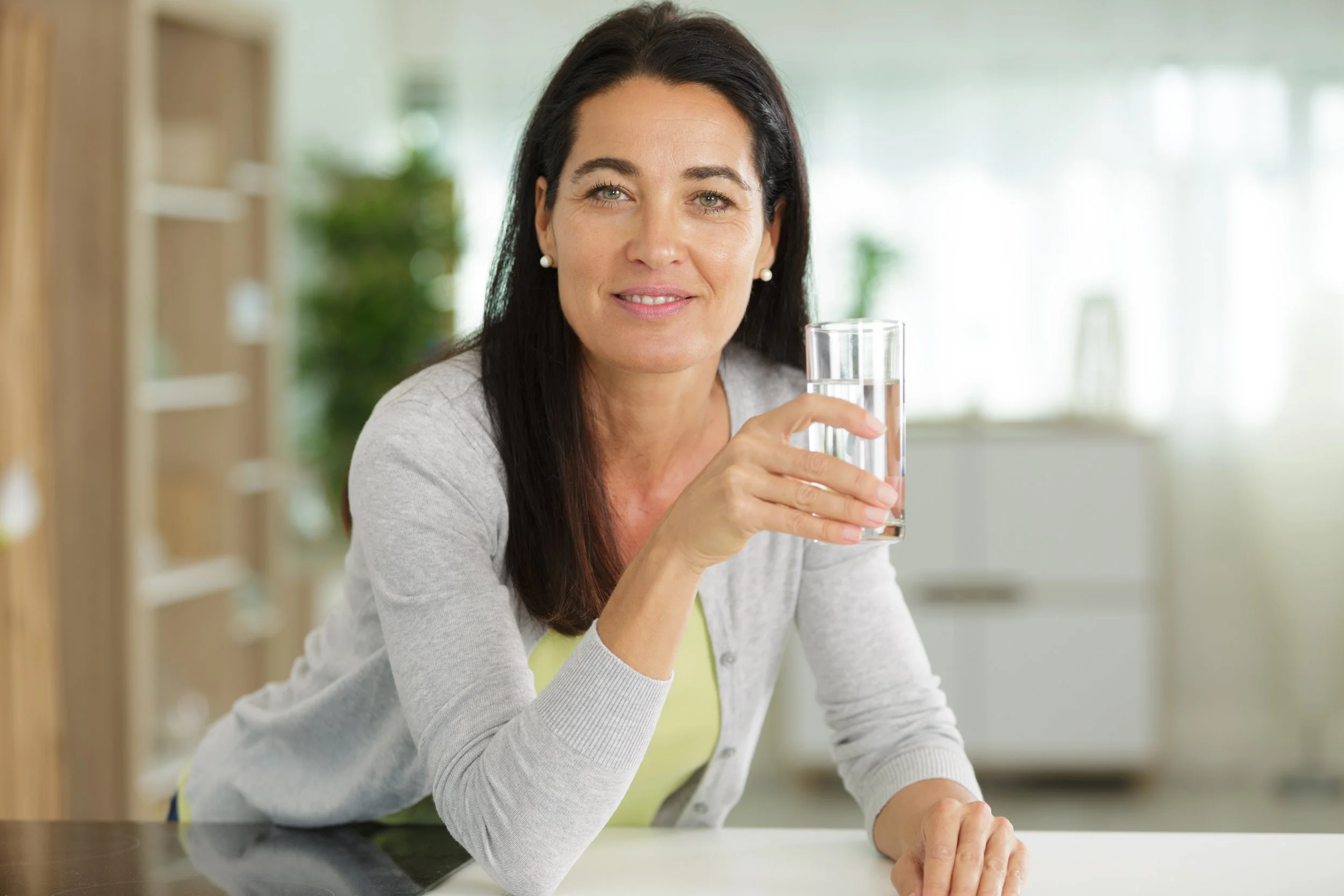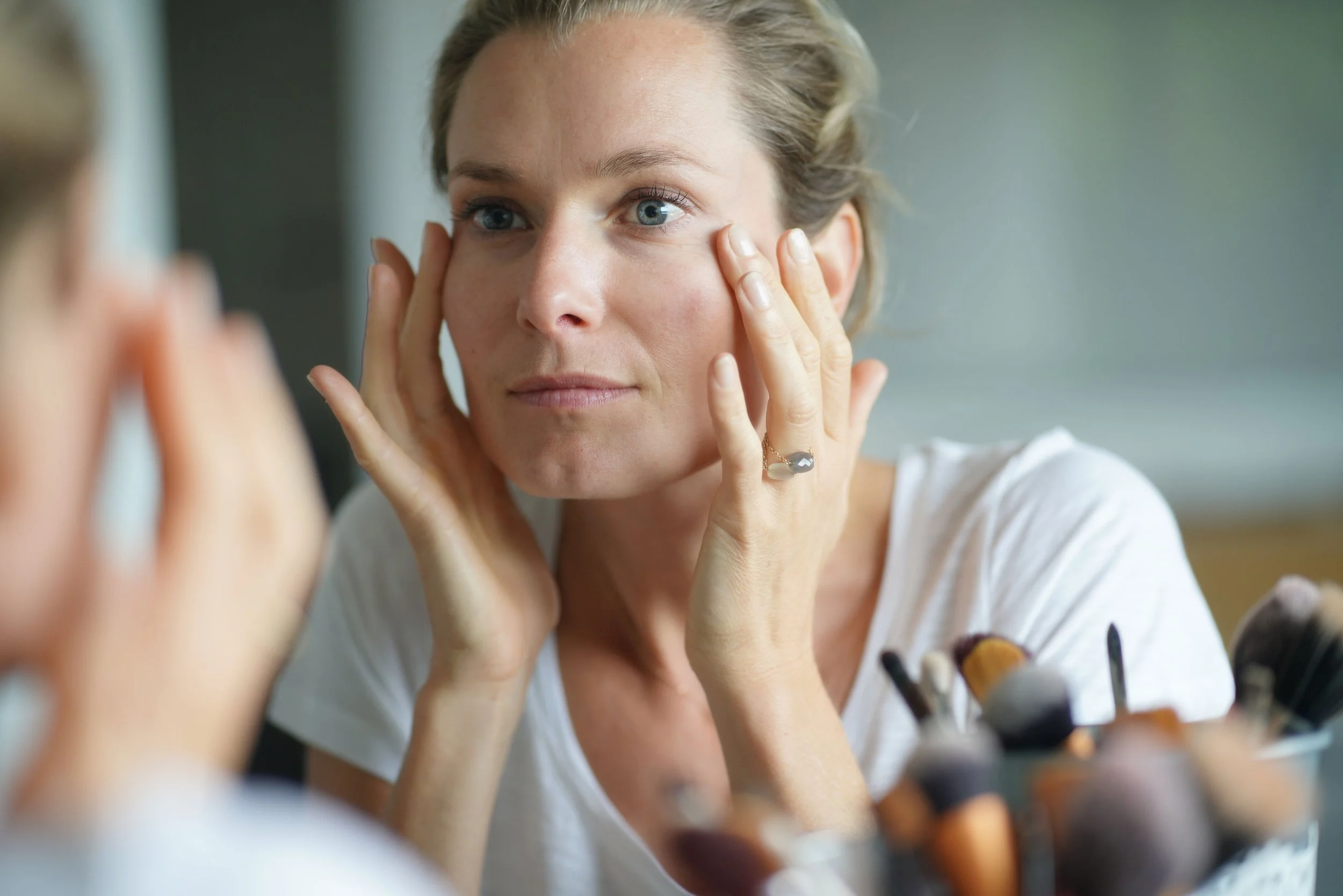Why Is My Face Puffy in the Morning? Causes and Expert Fixes
Waking up with a puffy face
We’ve all had those mornings. You glance in the mirror, only to see your face looking swollen, puffy, and not at all how you’d like to start your day. A puffy face in the morning is something many women ask me about, and it can feel frustrating. The truth is, puffiness is often your body’s way of showing that something is out of balance whether it’s fluid retention, hormones, sleep, or even diet.
Although puffiness is most noticeable first thing in the morning, it can strike at other times of day too, particularly if you’ve been stressed, eaten a salty meal, or spent long hours sitting at a desk. The good news? There are practical, effective steps you can take to reduce puffiness and feel like yourself again.
“Your face often reflects what’s happening inside your body — puffiness is usually a sign that something is out of balance.””
Common causes of a puffy face
1. Water retention
A top cause of morning puffiness is fluid retention. This can happen after a salty meal, alcohol, or even dehydration (yes, not drinking enough water makes your body hold onto fluids).
2. Hormonal changes
During perimenopause and menopause, falling oestrogen levels affect fluid balance. This can make your face look puffier, particularly around the eyes and jawline.
3. Inflammation
A diet high in processed foods, sugar, or alcohol can trigger inflammation, which doesn’t just affect your waistline but can also show up in your face.
4. Allergies or sinus issues
Seasonal allergies, food allergies, blocked sinuses, or even reactions to skincare products may leave your face swollen and puffy.
5. Poor sleep
Broken or insufficient sleep disrupts your hormones and increases fluid retention, which often explains that morning-after puffiness.
How to reduce puffiness
Hydrate wisely
Start your day with water. Drinking enough helps flush out excess sodium and supports your kidneys. If you exercise or sweat a lot, adding electrolytes can help keep your balance. Herbal teas such as dandelion or nettle may also encourage gentle fluid clearance.
Adjust your diet
Limit processed foods, sugar, refined carbs, and excess salt. Instead, focus on whole foods rich in potassium, like leafy greens, bananas, and sweet potatoes, which help balance fluids naturally. Adding omega-3s from oily fish, flax, or walnuts may reduce inflammation that contributes to swelling.
Support lymphatic drainage at home
Your lymphatic system clears waste and excess fluid, but it needs stimulation. Simple practices make a difference:
Face yoga: Gentle exercises, such as smiling and holding, or stretching your jawline, improve circulation and tone facial muscles.
Gua sha: A flat stone tool used with light pressure in upward, outward strokes can release tension, reduce puffiness, and stimulate lymph flow.
Self-massage: Using your fingers, sweep from the centre of your face outwards towards the ears and down the neck to encourage drainage. Even two minutes before bed or after cleansing can make a difference.
““Your lymphatic system has no pump — you are the pump. Simple movements like gua sha and face yoga can help drain away puffiness.””
Try professional treatments
Sometimes a little extra help works wonders:
Lymphatic drainage facials: A therapist uses gentle techniques to move fluid and refresh skin.
Cryotherapy facials: Cold treatments constrict blood vessels, tighten skin, and reduce puffiness.
Radiofrequency: These treatments stimulate collagen and improve circulation, helping reduce swelling and firm the skin.
Microcurrent facials or ultrasound: These support muscle tone, circulation, and lymph flow for long-term improvements.
Lifestyle tweaks that work
Sleep with your head slightly elevated to stop fluid pooling in your face.
Reduce alcohol before bed as it dehydrates and encourages puffiness.
Move during the day, sitting for long stretches slows circulation and can worsen swelling.
Cool compresses or chilled skincare
A cold eye mask, cucumber slices, or even chilled spoons (from the fridge) under the eyes can soothe swelling in minutes. Storing serums or eye creams in the fridge is another quick fix.
Manage stress
High cortisol levels worsen puffiness. Stress-relieving habits such as deep breathing, yoga, or simply stepping outside for fresh air can help both your skin and your overall wellbeing.
When to seek medical help
Most of the time, puffiness is harmless and linked to lifestyle, diet, or hormones. But if swelling comes on suddenly, is severe, or is accompanied by shortness of breath, chest pain, or swelling elsewhere in the body, seek medical advice.
Quick Wins to Beat a Puffy Face
Start with water – hydrate as soon as you wake up to flush out excess salt.
Cold spoon trick – keep two teaspoons in the fridge and place them under your eyes for 1-2 minutes.
Elevate your sleep – add an extra pillow to stop fluid pooling overnight.
Gentle face massage – use your fingertips to sweep outwards towards your ears and down the neck.
Cut back on salt and sugar – swap processed snacks for potassium-rich foods like leafy greens and bananas.
My expert tip
As both a nutritional therapist and beauty therapist, I always encourage women to think inside and out. Reducing puffiness isn’t just about what you put on your skin, it’s also about how you eat, sleep, and manage stress. A balanced diet with plenty of water, paired with simple self-care techniques like gua sha or facial massage, can transform not only how your skin looks but how you feel every day.
““Reducing puffiness isn’t just about creams or facials — what you eat, how you sleep, and how you manage stress matter just as much.””
Final thoughts
Waking up with a puffy face can feel discouraging, but it doesn’t have to be your norm. With the right combination of hydration, diet, skincare rituals, and stress management, you can minimise puffiness and start your mornings — or any time of day — looking and feeling refreshed. Small, consistent changes really do make the biggest difference.
If you found these tips helpful, you’ll love my bestselling book Have a Magnificent Menopause: A Straightforward Guide to Looking Good and Feeling Great. It’s already an #1 International Bestseller, helping women worldwide discover simple, realistic solutions for better energy, skin, weight balance, and confidence.
Get your copy below and start feeling like the best version of yourself today.
References
Dalle, C. & Kopalli, S.R. (2022). Skin ageing and lifestyle: the importance of hydration and nutrition. Nutrients, 14(15), 3079. https://pmc.ncbi.nlm.nih.gov/articles/PMC3583891/
Rockwell, M., Thistle, J.L., & Peverini, R. (2020). Facial oedema: causes and treatments. Journal of Clinical and Aesthetic Dermatology, 13(8), 28–35. https://pmc.ncbi.nlm.nih.gov/articles/PMC7369522/
Stachenfeld, N.S. (2014). Hormonal changes during menopause and the impact on fluid balance. Journal of Endocrinology, 223(2), R63–R78. https://pmc.ncbi.nlm.nih.gov/articles/PMC3984489/
Papakonstantinou, E., Roth, M., & Karakiulakis, G. (2016). Hyaluronic acid: A key molecule in skin ageing. Dermato-Endocrinology, 8(1), e1169320. https://pmc.ncbi.nlm.nih.gov/articles/PMC3583886/
Tzouros, M., Rallis, K. & Lazaridis, N. (2021). Facial lymphatic drainage massage: techniques and benefits. Aesthetic Medicine, 7(4), 14–19. https://pmc.ncbi.nlm.nih.gov/articles/PMC10045879/





